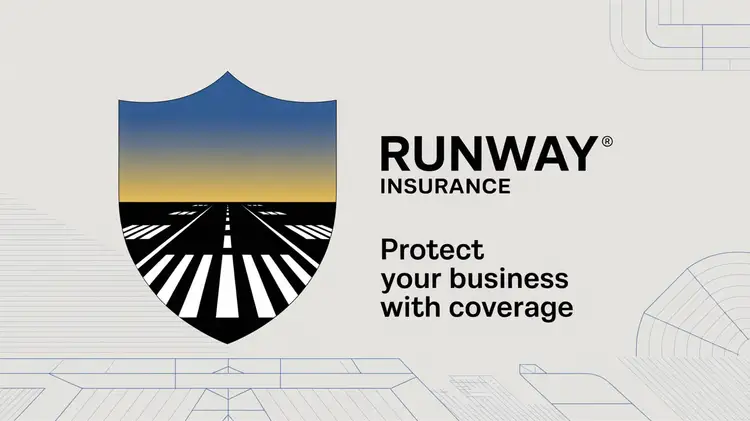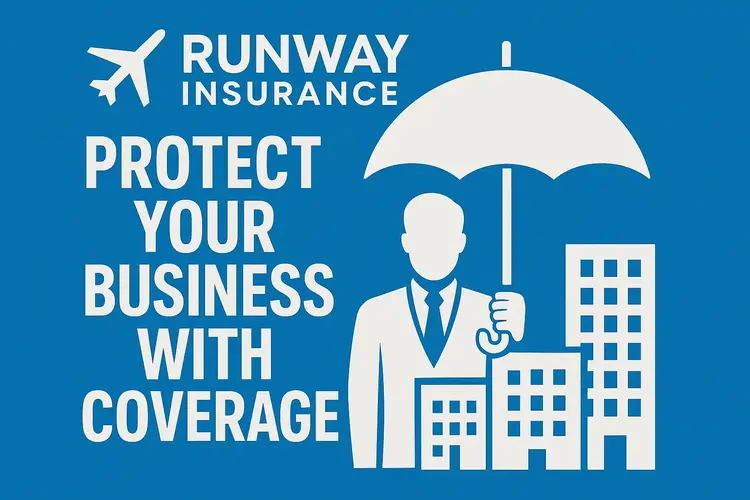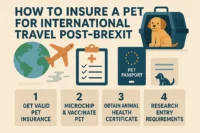Runway Insurance: Protect Your Business with Coverage
Published: 27 Jul 2025
Introduction
Operating a company in fashion, entertainment or live events is thrilling, yet the upside comes bundled with notable exposure to loss. Of all the safeguards an organizer can secure, runway insurance stands out as a non-negotiable shield. Whether you are directing a catwalk presentation, curating a trade fair or supporting any side of run-of-show logistics, the right policy protects money, reputation and future opportunities.
In the sections that follow, we will clarify what runway insurance covers, explain why it matters and outline the leading plans emerging in 2025. Risk factors unique to these productions will be matched to policy features, showing how coverage supports staff, equipment and intellectual property alike. By the conclusion, you should feel confident comparing options and selecting the package best suited to your runway enterprise.
What is Runway Insurance?
Definition of Runway Insurance
Runway insurance is a targeted policy group crafted for businesses and freelancers who stage runway events, from fashion week showcases to trade fairs. Because such productions involve podiums, lighting, moving models and large crews, exposures stretch from physical damage to bodily injury. Coverage usually embraces property loss, general liability and medical costs arising on-site or during critical set-up and breakdown phases.

What It Covers
Policies address cancellation of the show, damage to the venue, injuries sustained by the models and loss or destruction of essential equipment.
Why It Matters
Because runway presentations contain so many moving parts—large crowds, quick changes and high-value goods—they expose organizers to considerable financial risk. Insurance steps in to soften that blow and safeguard the bottom line.
Types of Runway Insurance Coverage
Every runway show is different, so coverage must be customized to match the specific format, scale and location of the production. Four staples are general liability, event cancellation, property insurance and workers compensation, each addressing a distinct layer of exposure.
What’s Covered
Taken together, these policies weave a safety net that protects you before, during and after the event, from rehearsal to teardown.
Why It Matters
By knowing what each option does, you can choose the blend of protection that fits your show and avoids costly gaps.
Why Do You Need Runway Insurance?
Protection Against Accidents and Injuries
The primary reason runway insurance is vital is that it shields your organization from the fallout of accidents and injuries. Because these shows gather large audiences, swift-moving models and intricate rigging all in one space, the risk profile is heightened. Falls, slips, equipment failures or unexpected crowd surges could harm talent, crew or guests—and, without solid coverage, the resulting medical bills, legal claims and reputational damage could cripple your operation.
What It Covers
Medical bills, legal costs and payments for any injuries that happen at the show.
Why It Matters
Even a small injury can trigger an expensive lawsuit, so liability insurance is essential for any business.

Coverage for Equipment and Property Loss
Fashion shows depend on costly gear, including lights, speakers and portable stages. Equipment can be scratched, soaked or even stolen during long set-ups or tear-downs, forcing producers to buy replacements at short notice. Property insurance for runway events thus shields those assets, keeping projects on track when mishaps occur.
What It Covers
Loss, damage or theft of all production property and equipment.
Why It Matters
This protection keeps your gear in good standing and allows the show to move forward even if a piece of equipment fails.
Event Cancellation Coverage
Storms, traffic jams or sudden emergencies sometimes force a show to shut down or delay indefinitely. Cancellation insurance steps in financially when a runway event is postponed, covering sunk costs like venue deposits, talent fees or printed materials.
What It Covers
Any non-refundable outlay that results from canceling the show.
Why It Matters
With this coverage, producers can absorb setbacks without crippling the budget or cutting corners on future performances.
Types of Coverage in Runway Insurance
Multiple coverage options exist within runway insurance, each crafted to meet a unique aspect of industry risk. By integrating these policies, event organizers safeguard their operations and help ensure each show proceeds without costly interruptions.
General Liability Insurance
General liability insurance addresses claims of bodily injury, property damage and personal harm brought by third parties. Should an attendee trip or a piece of equipment scratch a neighboring vehicle, this policy pays legal fees, medical bills and settlements, shielding the producer from out-of-pocket losses.
What’s Covered
Injuries, damaged property and related defense costs.
Why It’s Important
Because runway shows attract crowds and moving parts, general liability remains the backbone of prudent risk management for any organizer.
Property Insurance
Property insurance steps in when the production venue, cameras, lighting rigs or other critical assets sustain unintended harm. Whether a water leak mars the stage or a stolen laptop holds backup files, the policy covers repair, replacement and any resulting business-interruption expense.

What’s Covered
Damage to rented space, equipment and other physical assets.
Why It’s Important
Without this coverage, owners absorb steep repair bills and delays that can jeopardize future contracts. Property insurance provides the cash flow needed to restore operations swiftly and keep clients confident.
Workers Compensation Insurance
Whenever you involve employees or freelance crew on-site, you must secure a workers compensation policy. This protection pays for medical care and lost wages if someone is injured while, say, assembling the catwalk or moving audio gear.
What’s Covered
Doctors bills, rehabilitation fees and money for the time an employee cannot work because of the injury.
Why It’s Important
The policy safeguards both your staff and your budget, so everyone knows they will be looked after if an accident occurs during setup or showtime.
Event Cancellation Insurance
Another cornerstone of runway-risk coverage is event-cancellation insurance. When sudden trouble—such as a severe storm, a key shipment that never arrives or a venue lockdown—forces you to cancel or postpone, this policy reimburses the money you cannot get back.
What’s Covered
Prepaid items like hall rental, contractor deposits, marketing materials and any other outlays that would otherwise vanish into thin air.
Why It’s Important
By absorbing those sunk costs, the insurance softens the financial blow of surprises, allowing you to bounce back quicker rather than scramble to cover unexpected losses from your operating funds.
Choosing the Right Runway Insurance for Your Business
Assess Your Business Risks
Before you buy a policy, take time to map the risks tied to your day-to-day work and to specific events. Are you more anxious about liability claims from third parties or does the chance of costly equipment failures keep you awake at night? Pinpointing these questions lets you zero in on the type and depth of cover you actually need.
What’s Covered
Look at possible injuries, damage to props or gear or even losses from a last-minute cancellation.
Why It’s Important
Knowing your weak spots means you avoid buying too little cover for what really threatens your bottom line.

Compare Insurance Policies
When you know the gaps to fill, gather quotes from several insurers and set their offers side by side. Seek out a broker who lives and breathes event cover and who bundles protection specifically crafted for runway shows.
What’s Covered
Scan the premiums, limits, deductibles and the fine print on exclusions each carrier relies on.
Why It’s Important
A little legwork today usually saves you money tomorrow and gives you peace of mind that every scenario is considered.

Review Policy Terms and Exclusions
Always examine the full text—not just the summary—of any insurance quote you receive. Carriers routinely insert exclusions or limits that can leave major gaps during a claim. A common instance is damage caused by specific weather events or by a type of equipment named in the fine print.
What’s Covered
Examples of exclusions, limits and unique clauses that define the scope.
Why It’s Important
A careful read reveals whether you face hidden risk and lets you seek necessary amendments.
Determine Your Budget
Your financial plan should shape, not shackle, the coverage you buy. Broad protection is vital, yet a policy that strains your budget may prompt skipped payments or cancelled terms. Many companies present split-payment schedules or financing that smooths large premiums into manageable installments.
What’s Covered
Premium costs plus any optional riders, endorsements or higher-limits features.
Why It’s Important
Choosing affordable, thorough protection spares you from underinsurance and prevents wasted premium dollars.
How Much Does Runway Insurance Really Cost?
Average Cost of Runway Insurance
Runway insurance is not a one-size-fits-all price; it shifts with the size of the show, the limits you select and where you hold the gig. For most productions, the premiums fall somewhere between $500 and $5,000, rising with every extra layer of complexity or risk.
What’s Included
That figure typically bundles liability, damage to rented property, workers compensation and even coverage in case the whole thing must be canceled.
Why It Matters
Knowing the ballpark figure lets planners carve out room in the budget early, rather than scrambling for funds later.
Factors That Affect the Cost of Runway Insurance
Event Size and Scope
The more models, crew and VIPs you count, the higher the odds—and the premium.
Location
Hosting the show in a busy urban center or a flood-prone beach town may trigger steeper rates, because local underwriters see added hazards.
Coverage Limits
Bumping up the ceiling for liability or property claims pushes the cost north, as the insurer braces for bigger payouts.
Add-ons and Riders
Specialty clauses for high-tech cameras, outdoor weather risks or celebrity no-show fees will of course pad the final bill.

FAQs
Runway coverage is rarely a legal requirement, yet industry experts advise it as a safeguard against injuries, damage and last-minute cancellations.
Policy costs drop when you raise the deductible, compare quotes from several brokers or bundle the runway coverage with general-event or liability plans.
Many cancellation policies do cover adverse weather, but you must verify the exact wording with your carrier before purchasing.
Most carriers issue certificates within three to seven business days, though complex productions with multiple venues may take longer.
Absolutely; numerous insurers specialize in on-the-spot, single-day policies that suit pop-up shows, fashion weeks or other brief runway occasions.
Conclusion
Runway insurance is an important safety net that helps keep your firm afloat and your shows on course. Whether you organise a fashion catwalk, an industry exhibition or some other runway activity, broad coverage shields you from money losses, legal claims and sudden event cancellations. By sizing up your own requirements, weighing competing policies and picking the correct plan, you can fortify the operation while still keeping expenses in check.
So review several quotes, ask clear questions and grasp what each clause covers for your particular occasion. With the right policy secured, you can stage your runway event with calm assurance, ready to face whatever surprises arise.

- Be Respectful
- Stay Relevant
- Stay Positive
- True Feedback
- Encourage Discussion
- Avoid Spamming
- No Fake News
- Don't Copy-Paste
- No Personal Attacks

- Be Respectful
- Stay Relevant
- Stay Positive
- True Feedback
- Encourage Discussion
- Avoid Spamming
- No Fake News
- Don't Copy-Paste
- No Personal Attacks





